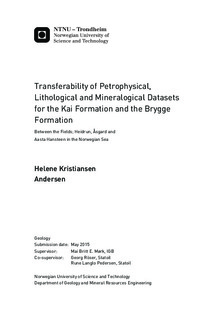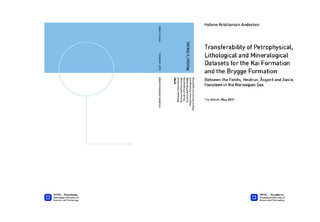| dc.description.abstract | Transferability of datasets between fields is of great interest in the current economic situation. Transferability is the ability to use the same set of data in two or more separate places without doing further testing. In order to optimize the cost efficiency during drilling operations it is important to know what is most efficient, conventional testing or transfer of datasets. To investigate transferability, the topic of using shale formations as hydraulic barriers was chosen. Three fields were selected for the investigation: the Heidrun Field, the Åsgard Field and the Aasta Hansteen Field. From each field several wells were picked based on the availability of datasets from the two chosen formations, linked to petrophysical logs, lithological descriptions and mineralogical analyses. The mineralogical analyses were based on x-ray diffraction data. The Kai Formation was chosen as it has already been confirmed as a hydraulic barrier on the Heidrun Field; in the reference well which was used for the comparison of the datasets. The Brygge Formation has not been confirmed as a barrier and was mostly used as an extension to the Kai Formation, to have a larger set of available data. The transferability of both formations was assessed.
The transferability of the petrophysical logs, the lithological descriptions and the mineralogical analyses within and between the Heidrun and Åsgard Fields proved possible for the Kai Formation, and the likelihood of using it as barrier in the extended area is relatively high. The Brygge Formation also proved possible to correlate between the two fields. However since it has not been proven as a barrier, no conclusion was drawn concerning its ability to act as a barrier. Between the Heidrun and Åsgard Field and the Aasta Hansteen it was hard to correlate the formations and finding a possible barrier interval is most likely impossible. The method used for the comparison was a broad approach and can be used for similar types of projects. However, to optimize the method, especially for the topic of shale formation as a barrier, more information is needed concerning rockmechanical and geochemical aspects. At this point there is no conclusive statement to how and why some shale formations act as a barrier and it is necessary to answer this before the method can be optimized. The method in itself works quite well when considering the question of transferability. Nevertheless, the amount of work and difficulty in finding suitable data is probably less cost efficient than doing the conventional tests during drilling operations. | |

